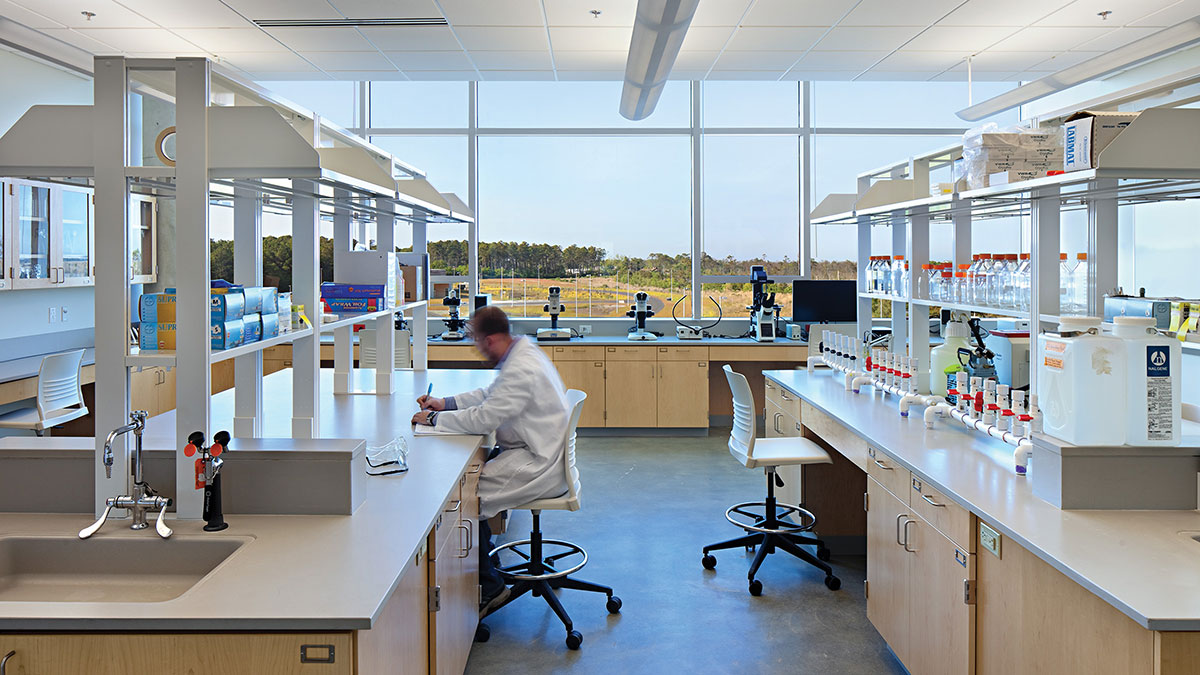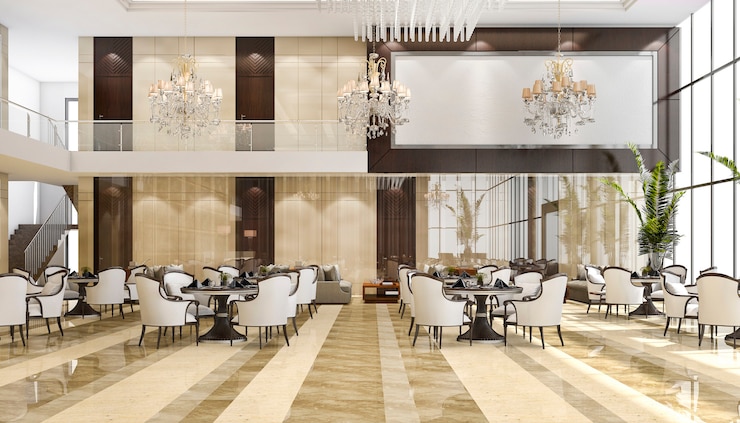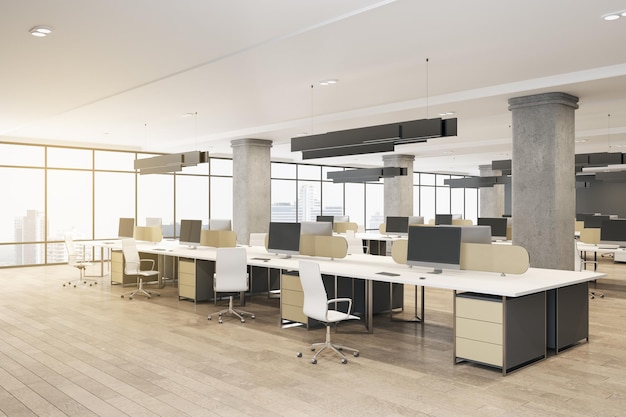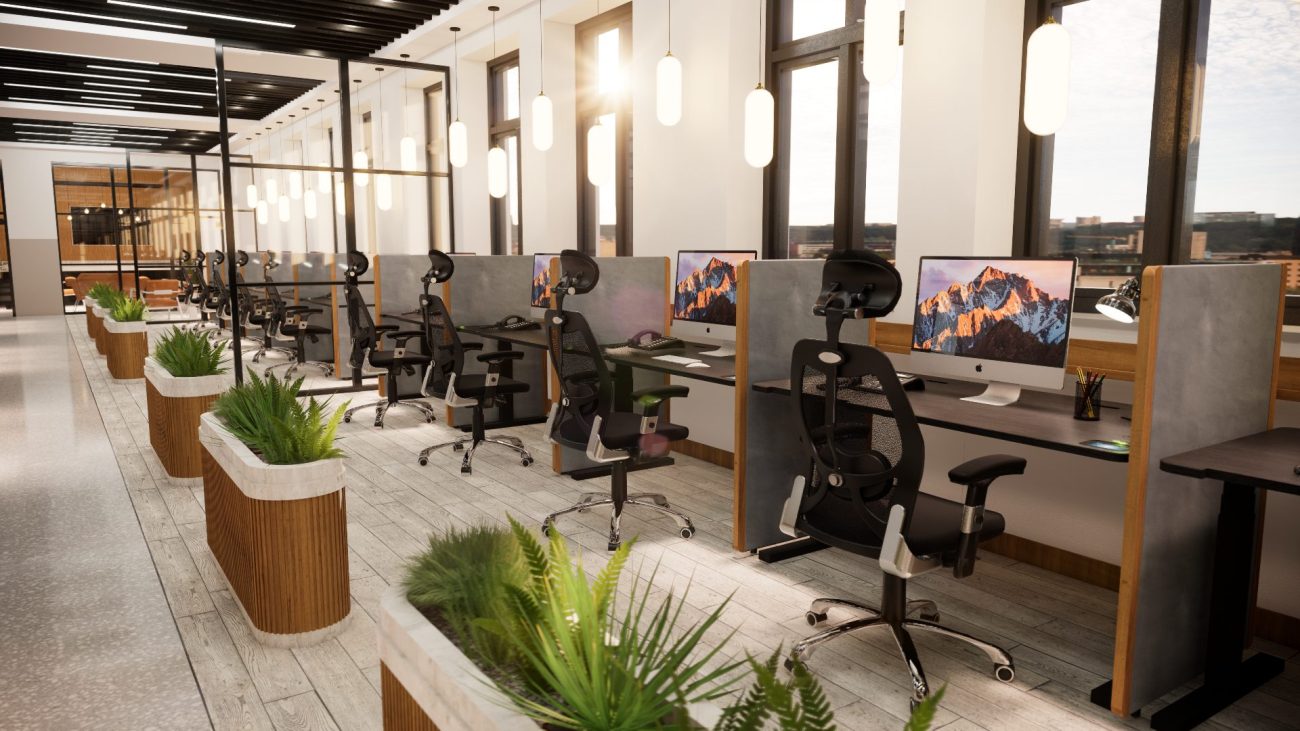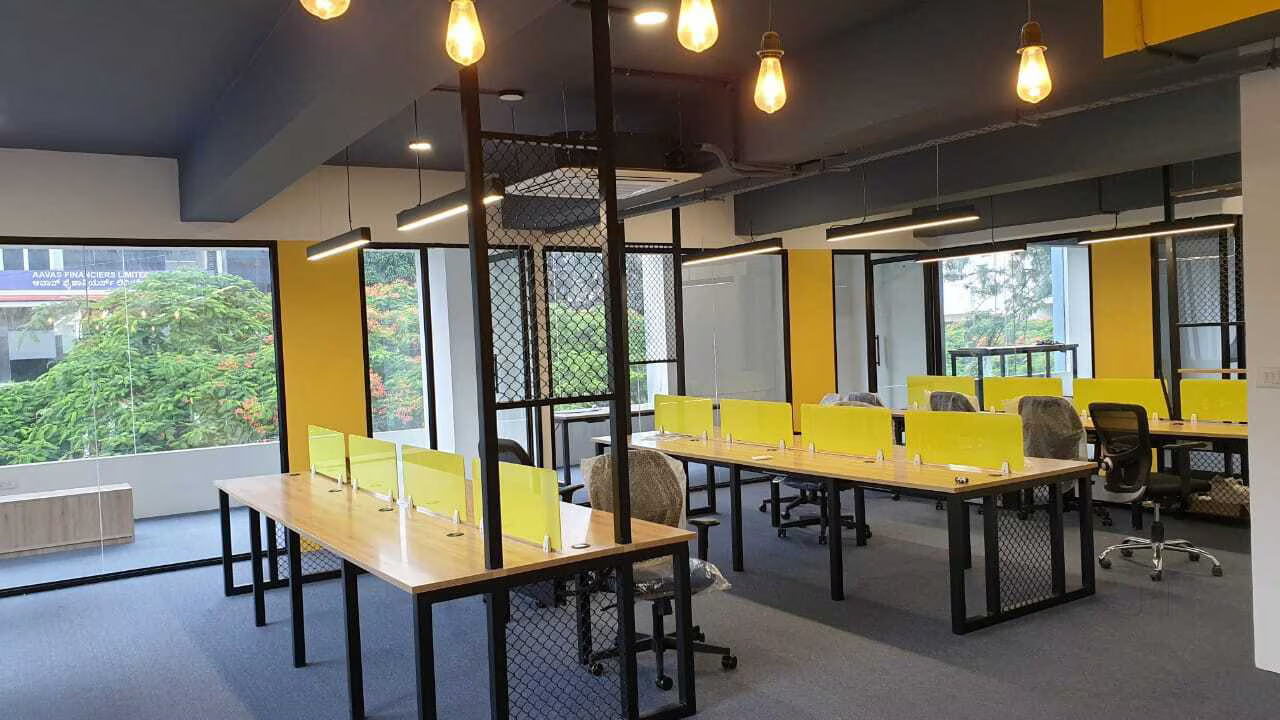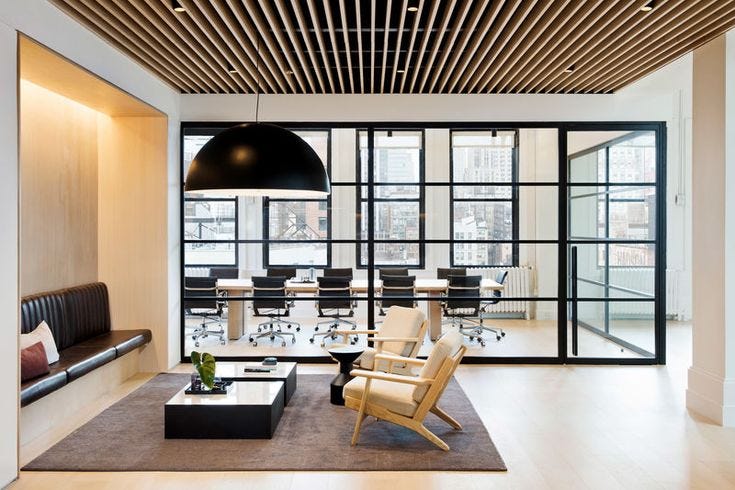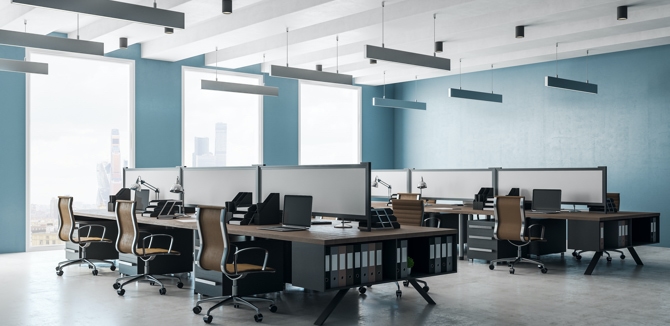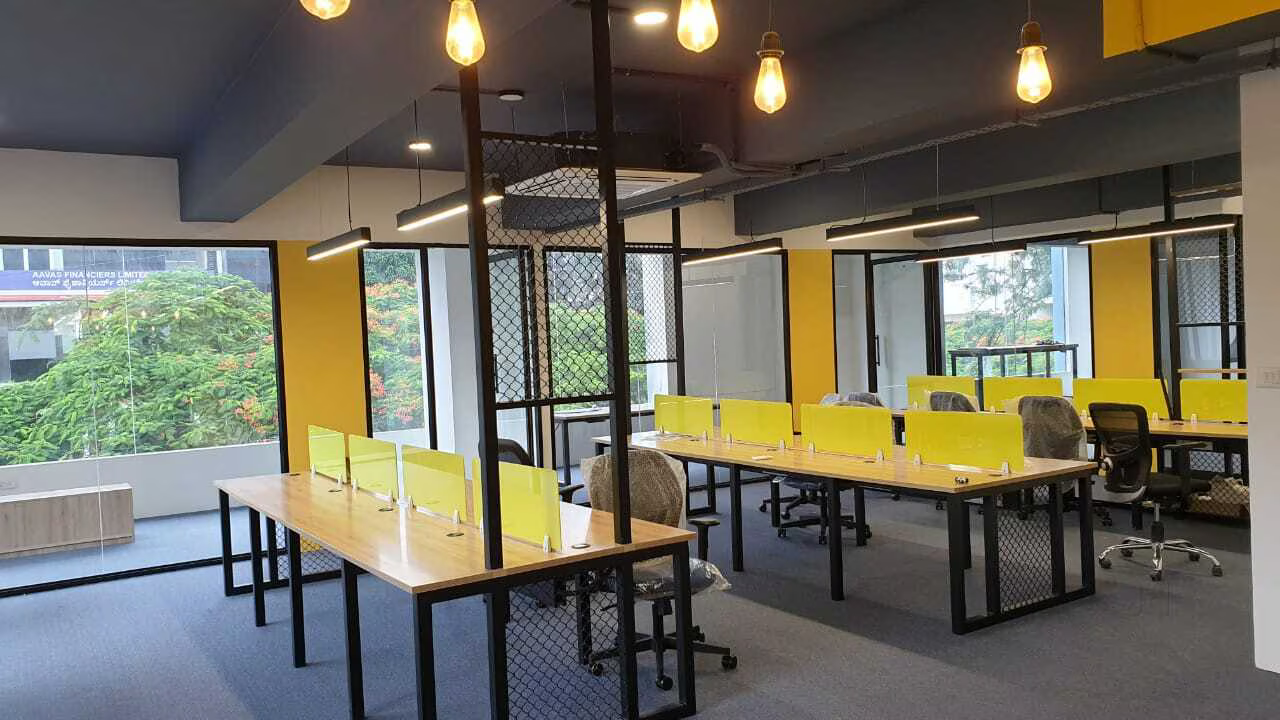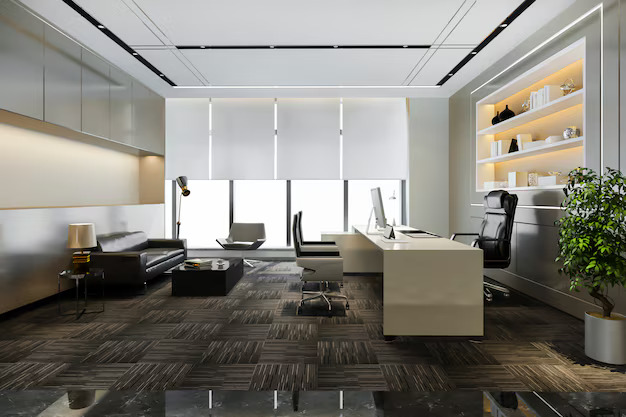Flexibility and adaptability are critical in a field where scientific progress is extremely rapid. The real challenge, however, is to foster an environment conducive to innovation. We’ve compiled a comprehensive guide that identifies the key elements of laboratory design for creating spaces that inspire breakthroughs and meet future challenges.
Key Considerations for Any Laboratory Design
The fundamental principles of laboratory design are safety, functionality, and adaptability.
Safety First
Every laboratory’s design must prioritize safety above all else, so designers must first consider the materials and processes that workers will encounter within its walls.When it comes to safety, these concerns should be top of mind:
- Advanced ventilation systems manage the air quality.
- Fire extinguishers and fire-resistant materials can prevent accidents from becoming disasters.
- Strategic placement of eyewash stations and showers can protect against chemical exposure.
- Clear, unobstructed pathways with clear exits can also play an important role in improving safety.
Built To Change
Research, by definition, pushes the limits of human knowledge. That means change. Here are some tips to help you incorporate adaptability into your laboratory design:
- Modular furniture, which includes adjustable shelves, storage, and equipment, enables quick reconfiguration to support new research directions.
- Flexible utility connections and movable casework support evolving technical needs.
- Prepare for the possible need for new infrastructure to avoid costly and disruptive upgrades later.
Going Green Means Saving Green
Laboratories are notoriously energy-intensive. High water and energy costs can result in cost overruns, potentially reducing research efficiency. Here are some cost-effective and environmentally friendly laboratory design elements to consider:
- Energy-efficient lighting, HVAC systems, and water-saving fixtures can significantly reduce a lab’s carbon footprint and operational costs.
- Designs that maximize natural light can promote a healthy indoor environment.
- Materials and systems with a lower environmental impact, such as recycled content and low-emission finishes, can improve a lab’s sustainability.
Tech-Readiness
Many modern research projects involve as much computing power as they do scientific instruments and experiments. Consider the following when designing your laboratory to support technological readiness:
- Robust data networks, adequate power outlets, and flexible spaces can help any lab accommodate current and future technologies.
- Creating data analysis areas near the experimental spaces can ensure researchers have seamless access to the necessary tools.
- Planning for high-performance computing’s physical needs, including cooling and power requirements, ensures labs can support the increasingly data-intensive nature of research.
The Specific Needs of Life Science Laboratories.
Every research field will have its own set of requirements for a laboratory that is both sustainable and efficient. Life sciences are at the forefront of research in areas such as genetics, biotechnology, and pharmaceuticals. Their design must allow for complex biological work while also encouraging scientific innovation and collaboration.
Unique Safety Requirements
Life sciences laboratories frequently deal with hazardous biological materials. The design must accommodate various biosafety levels (BSLs) and provide appropriate containment facilities, such as sterilization autoclaves and specialized ventilation systems, to protect the research and the researchers.
Efficient workflows for the safe handling, storage, and disposal of biological samples and chemicals are also required. This includes designing spaces for receiving, storing, and processing samples, as well as waste management areas that meet safety standards.
Collaboration & Innovation
Spaces that foster interaction and collaboration among researchers can hasten innovation. Designing labs with common areas, break rooms, and meeting spaces where researchers can share ideas and collaborate on projects can help to advance research and foster productive teamwork. Consider combining open lab areas for teamwork and private spaces for focused research or sensitive discussions. This supports a variety of activities and workstyles, meeting the diverse needs of research teams.
Environmental Controls
Many life sciences experiments necessitate precise control over temperature and humidity. Designing HVAC systems that can maintain specific conditions throughout the lab can help to ensure the integrity of experimental data. Good ventilation and air filtration systems are also essential for protecting employees from hazardous substances and preventing experiment cross-contamination.
A Checklist for Adapting Designs for Specific Laboratory Applications
Safety considerations
-What safety requirements apply to the type of work being done in the lab? -How does the design incorporate safety equipment, emergency exits, and material handling to ensure compliance with regulations?
Future adaptability
– Can the lab layout and furnishings be easily reconfigured for different research needs or technologies?
– Is the design flexible enough to accommodate future growth or function changes?
Technical Integrations
-What infrastructure is required to meet the laboratory’s current and future technological needs? -How will data management and analysis be integrated into the laboratory setting?
Environmental Considerations
-How can the lab’s design reduce its environmental impact by incorporating energy efficiency and sustainable materials? -What temperature, humidity, and air quality control systems are in place, and how do they help to ensure long-term operations?
Collaboration vs. Private Workspaces
-How does the design strike a balance between collaborative and individual work areas? -Are there flexible spaces that can be used for multiple purposes, such as when collaboration or privacy requirements change?
Material Handling and Storage
-Is there adequate storage for chemicals, biological materials, and equipment? -How does storage design impact laboratory workflows and safety protocols?
Accessibility and Ergonomics
-How does the design ensure that all lab users can work comfortably and effectively? -Are ergonomics and accessibility considered when designing workstations, equipment, and safety features?
CRL Interiors Can Help Design Any Laboratory
From ensuring the integration of cutting-edge technology to creating environments that encourage collaboration without sacrificing individual focus, laboratory design details are critical to the progress and breakthroughs that can be achieved.
Whether you want to build a new lab from the ground up or retrofit an existing space to better meet the needs of cutting-edge research, CRL Interior is ready to help you realize your project’s full potential.
Our comprehensive system of design and execution, combined with a focus on budget and time management, ensures a streamlined process from concept to completion, allowing you to prioritize science over logistics.
